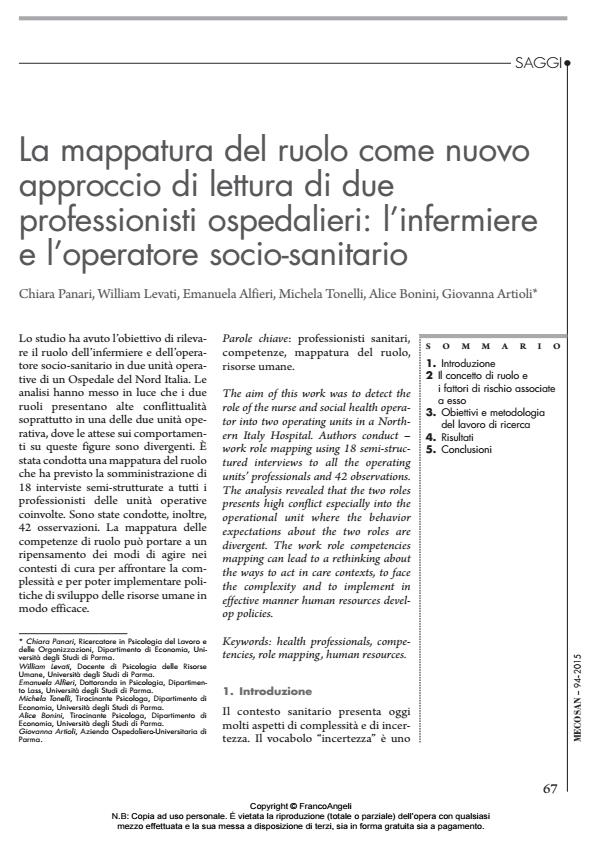La mappatura del ruolo come nuovo approccio di lettura di due professionisti ospedalieri: l’infermiere e l’operatore socio-sanitario
Journal title MECOSAN
Author/s Chiara Panari, William Levati, Emanuela Alfieri, Michela Tonelli, Alice Bonini, Giovanna Artioli
Publishing Year 2015 Issue 2015/94
Language Italian Pages 29 P. 67-95 File size 20170 KB
DOI 10.3280/MESA2015-094005
DOI is like a bar code for intellectual property: to have more infomation
click here
Below, you can see the article first page
If you want to buy this article in PDF format, you can do it, following the instructions to buy download credits

FrancoAngeli is member of Publishers International Linking Association, Inc (PILA), a not-for-profit association which run the CrossRef service enabling links to and from online scholarly content.
The aim of this work was to detect the role of the nurse and social health operator into two operating units in a Northern Italy Hospital. Authors conduct - work role mapping using 18 semi-structured interviews to all the operating units’ professionals and 42 observations. The analysis revealed that the two roles presents high conflict especially into the operational unit where the behavior expectations about the two roles are divergent. The work role competencies mapping can lead to a rethinking about the ways to act in care contexts, to face the complexity and to implement in effective manner human resources develop policies.
Keywords: Health professionals, competencies, role mapping, human resources
Chiara Panari, William Levati, Emanuela Alfieri, Michela Tonelli, Alice Bonini, Giovanna Artioli, La mappatura del ruolo come nuovo approccio di lettura di due professionisti ospedalieri: l’infermiere e l’operatore socio-sanitario in "MECOSAN" 94/2015, pp 67-95, DOI: 10.3280/MESA2015-094005